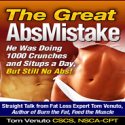BMR and Its Importance for Effective Fat Loss
Basal Metabolic Rate or bmr is an important index showing how many
calories our body needs to support its functions when it is in the
state of rest. This index is closely linked to our metabolism and the
processes related to thermogenesis (the production of heat by our body)
Basal
metabolic rate depends on factors such as our gender, our current body
mass, our height and our age. In addition, such aspects as physical
activities, daily diet, stress levels, illnesses, emotions, etc.,
influence our metabolic rate, to a lower extent.
In order to calculate our basal metabolic rate,in kcal / 24hrs, we can use the following common formulas:
• Metric formulas:
For Women = 655 + (9.6 * weight in kg) + (1.8 * height in cm) - (4.7 * age in years)
For Men = 66 + (13.7 * weight in kg) + (5* height in cm) - (6.8* age in years)
• Formulas for inches and pounds:
For Women = 655 + (4.35 * weight in pounds) + (4.7 * height in inches) - (4.7 * age in years)
For Men =66+ (6.23 * weight in pounds) + (12.7 * height in inches) - (6.8 * age in years)
My belief is that basal metabolic rate is actually one of the key indicators
for everyone who wants to rapidly melt fat and enjoy the benefits of
being fit. It is obvious that the higher it is, the more energy we spend
for supporting our body function, and the less energy is stored in our
body as fat.
Based on that fact, in order to boost our metabolism we should try to elevate our bmr.
Unfortunately, the human body, if left without regular exercise, has the tendency, as it ages, to decrease its bmr.
Why that happens?
Because as we grow older, our body in order to sustain its functions,
while it never exercises, has to replace the energy it needs from its
own energy stores, which are its muscles. Less muscle mass means lower
BMR. This is a never ending cycle unless we do something. That something is nothing more than working out regularly and maintain a healthy diet.
What is the most common mistake people make?
Most people believe that in order to increase their Basal Metabolic Rate they need to solely do cardiovascular exercises and activities.
Several studies, such as the one done by the expert team of Prof.
Broeder at Department of Kinesiology and Health Education, University of
Texas, published in the American Journal of Clinical Nutrition in April
1992, and the one of Australian scientists at Flinders University of
South Australia, published in Journal of Applied Psychology in January
1997, have shown that there is no connection between aerobic exercises
and basal metabolic rates.
Instead, two different studies, one
carried out by a group of W. Campbell and M. Crim and published in the
American Journal of Clinical Nutrition and the other was published in
Journal of Applied Physiology in January 1994, were mainly focused on
studying the effects of weight training on BMR of elder people and they
have shown that weight training has longer and deeper impact compared to
aerobic training.
As a conclusion we need to have in mind two things:
1. In order to increase our Basal Metabolic Rate we need to increase our muscle to fat ratio. This can be done with two ways. Either increase your muscle mass or decrease your body fat percentage. Ideally one should aim for both at the same time.
2.
Cardio exercises should be a part of a regular workout routine for many
more reasons than to simply increase our basal metabolic rate mr.
However, by itself it will never provide the increased bmr effect which
leads to increased fat loss. If one simply wants to get off the couch
and exercise a little and even lose a little weight then cardio is OK.
But if someone wants a new lean body which will be healthy at the same
time, then a combination of weight training and cardio routines is the
only way to go.
“ Keep your muscles and lose fat, not weight!”
Return to fat loss guide from bmr
Join our
Fat Fighters Newsletter
and receive for FREE
a copy of... 
...that will provide you with the absolutely necessary to, finally, reveal your abs!






New! Comments
Have your say about what you just read! Leave me a comment in the box below.